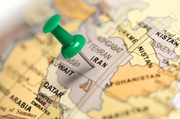They ARE talking about it. They were at it again in
Not, at least, the sense of urgency that would be required to take actions that would invalidate the prediction, in the latest issue of the journal Science, that climate change may cost southern
Even some parts of the developed world would be in deep trouble at that point. One part of the developed world,
Over the past couple of years, due to a major shift in public opinion, we have arrived at something close to a global consensus that climate change is a major problem. Even George W. Bush now says that he is concerned about it. But there is no consensus on the best measures to deal with the problem, even among the experts, and the general public still does not grasp the urgency of the situation.
The two Democratic candidates for the presidency in the United States promise 80 percent cuts in emissions by 2050, and John McCain for the Republicans promises 50 percent cuts by the same date, and nobody points out that such a leisurely approach, applied in every country, condemns the world to a global temperature regime at least three or four degrees Celsius (5.5 to 7 degrees Fahrenheit) warmer than today.
Nobody points out that those are average global temperatures which take into account the relatively cool air over the oceans, and that temperatures over land would be a good deal higher than that. Few people are aware that these higher temperatures will prevent pollination in many major food crops in parts of the world that are already so hot that they are near the threshold, and that this, combined with shifting rainfall patterns, will cause catastrophic losses in food production.
And hardly anybody says that it is going to get really bad as early as 2030 unless we get global emissions down by 80 percent by 2020, because “everybody knows” that that is politically impossible, and nobody wants to look like a fool. So we must just hope that physics and chemistry will wait until we are ready to respond.
But here is a bulletin from the front. Over the past few weeks, in several countries, I have interviewed a couple of dozen senior scientists, government officials and think tank specialists whose job is to think about climate change on a daily basis. And NOT ONE of them believes the forecasts on global warming issued by the Intergovernmental Panel on Climate Change just last year. They think things are moving much faster than that.
The IPCC’s predictions in the 2007 report were frightening enough. Across the six scenarios it considered, it predicted “best estimate” rises in average global temperature of between 1.8 and 4.0 degrees Celsius (3.2 and 7.2 degrees F) by the end of the 21st century, with a maximum change of 6.4 degrees Celsius (11.5 degrees F) in the “high scenario”. But the thousands of peer-reviewed scientific papers that the IPCC examined in order to reach those conclusions dated from no later than early 2006, and most relied on data from several years before that.
It could not be otherwise, but it means that the IPCC report took no notice of recent indications that the warming has accelerated dramatically. While it was being written, for example, we were still talking about the possibility of the
Nor did the IPCC report attempt to incorporate any of the “feedback” phenomena that are suspected of being responsible for speeding up the heating, like the release of methane from thawing permafrost. Worst of all, there is now a fear that the “carbon sinks” are failing, and in particular that the oceans, which normally absorb half of the carbon dioxide that is produced each year, are losing their ability to do so.
Maybe the experts are all wrong. Here in the present, out ahead of the mounds of data that pile up in the rearview mirror and the studies that will eventually get published in the scientific journals, there are only hunches to go on. But while the high-level climate talks pursue their stately progress towards some ill-defined destination, down in the trenches there is an undercurrent of suppressed panic in the conversations. The tipping points seem to be racing towards us a lot faster than people thought.
(Feb. 4
MS/HG
END
MNA

























Your Comment